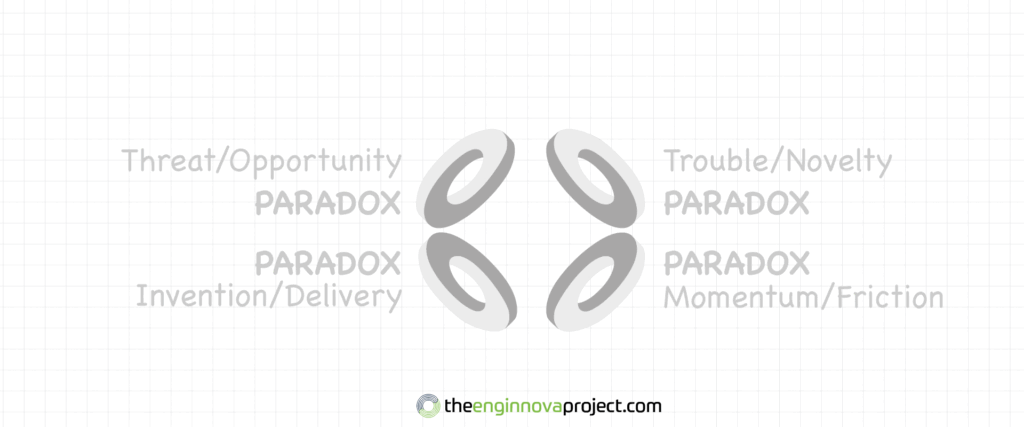
Paradox Uncertainty Stymies Innovation
A 2021 study by the Boston Consulting Group reported that 75% of the surveyed companies identified innovation as a top 3 strategic priority. The study also concluded that 80% of these companies had a “Readiness Gap”. This gap would prevent them from getting the impact they want from innovations. The primary factor in the Readiness Gap was the lack of a systemic innovation practice.
The issues and challenges involved in innovating are well known. You need to understand the market context, have good ideas, a reliable development process, and the ability to manage change. What isn’t well known is the effect of unrecognized uncertainty on innovating.
There is always a level of uncertainty associated with inventing, developing, and deploying new solutions. Uncertainty increases the risk that the new solution will not be adopted in the marketplace. This uncertainty / risk aversion can bias decisions towards low impact projects. The outcomes don’t improve the business much if they succeed, and don’t hurt the business much if they fail.
Most Innovation Programs do not identify all the primary sources of uncertainty. Common sources of uncertainty, such as the Market Situation, Problem Solving, and the NPD Process, are recognized. But it is rare to understand that a major source of uncertainty is hidden in 4 Paradoxes.
The Threat / Opportunity Paradox, hidden in the Context Issue and the Growth Challenge, can cause you to miss making the impact you need your innovating project to make.
The Trouble / Novelty Paradox, hidden in the Problem Solving Issue and the Idea Challenge, can cause you to design and develop a new solution that nobody wants.
The Invention / Delivery Paradox, hidden in the NPSPD Execution Issue and the Development Challenge, can cause you to miss delivery of high integrity new solutions on time and on budget.
The Momentum / Friction Paradox, hidden in the Change Issue and the Rate-of-Change Challenge, can cause the new solution to not be accepted or adopted.
We have identified and integrated all the primary sources of uncertainty into the TEP Innovating Practice. The Enginnova Project is uniquely and distinctly organized to systematically reduce uncertainty, de-risking innovating to deliver more innovation faster.
